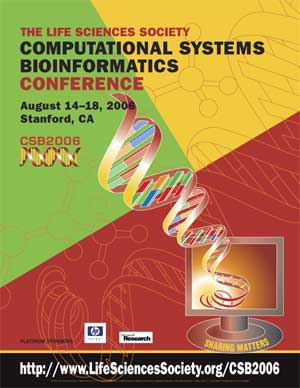EVOLUTION VERSUS “INTELLIGENT DESIGN”: COMPARING THE TOPOLOGY OF PROTEIN-PROTEIN INTERACTION NETWORKS TO THE INTERNET
Q. Yang, G. Siganos, M. Faloutsos, S. Lonardi*
Department of Computer Science and Engineering, University of California, Riverside, CA 92521, USA. stelo@cs.ucr.edu
Comput Syst Bioinformatics Conf. August, 2006. Vol. 5, p. 299-310. Full-Text PDF
*To whom correspondence should be addressed.

Recent research efforts have made available genome-wide, high-throughput protein-protein interaction (PPI) maps for several model organisms. This has enabled the systematic analysis of PPI networks, which has become one of the primary challenges for the system biology community. In this study, we attempt to understand better the topological structure of PPI networks by comparing them against man-made communication networks, and more specifically, the Internet. Our comparative study is based on a comprehensive set of graph metrics. Our results exhibit an interesting dichotomy. On the one hand, both networks share several macroscopic properties such as scale-free and small-world properties. On the other hand, the two networks exhibit significant topological differences, such as the cliqueshness of the highest degree nodes. We attribute these differences to the distinct design principles and constraints that both networks are assumed to satisfy. We speculate that the evolutionary constraints that favor the survivability and diversification are behind the building process of PPI networks, whereas the leading force in shaping the Internet topology is a decentralized optimization process geared towards efficient node communication.
[CSB2006 Conference Home Page]....[CSB2006 Online Proceedings]....[Life Sciences Society Home Page]